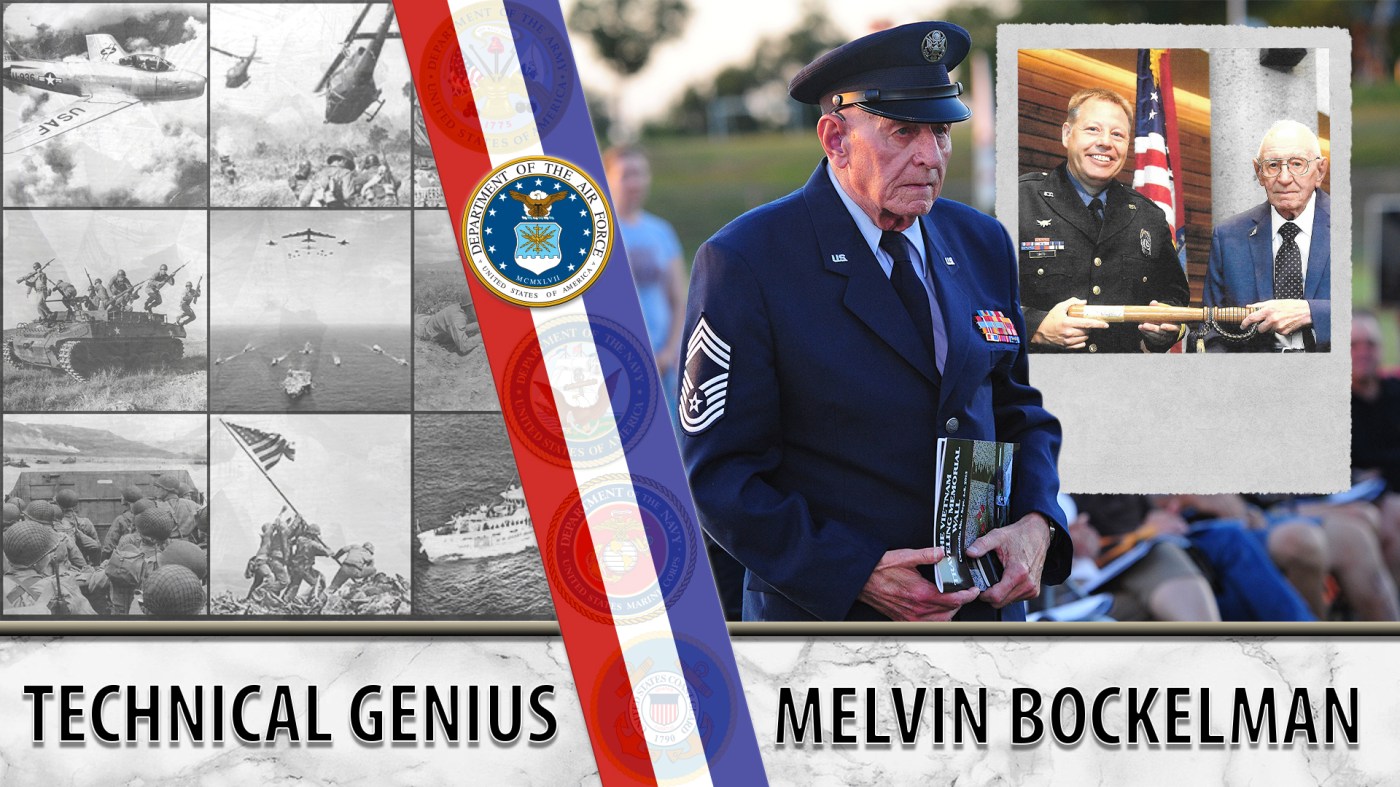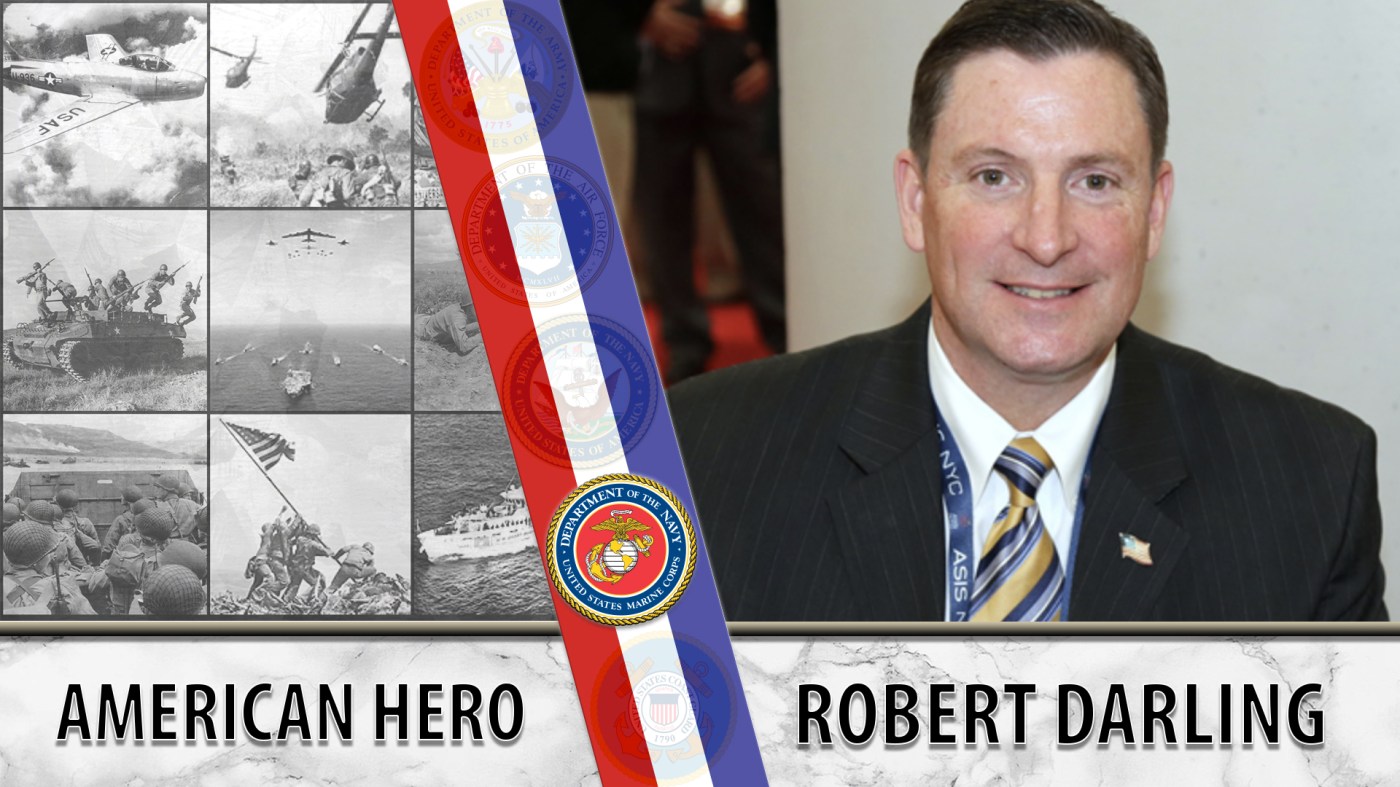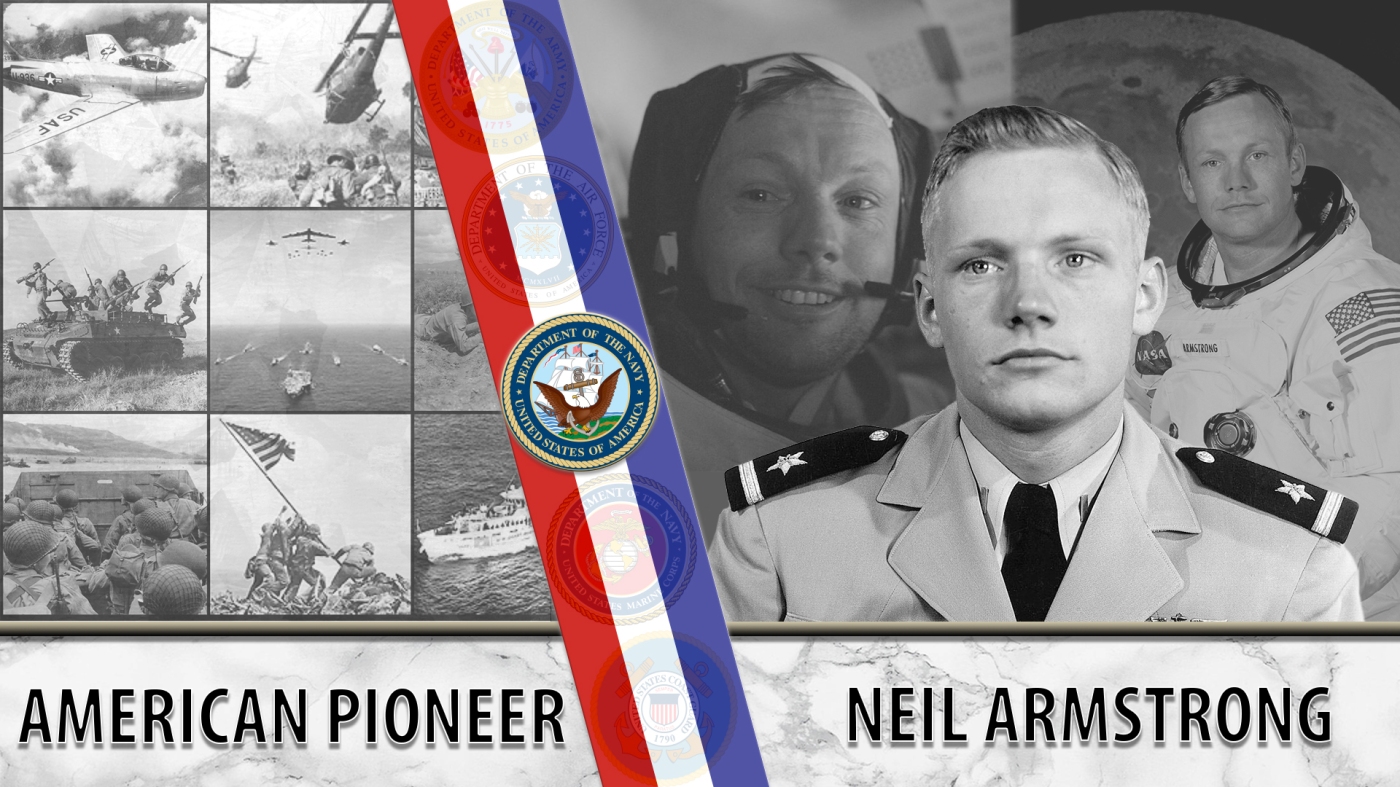
Chief Master Sgt. Melvin Bockelman served in the Merchant Marines during World War II before joining the Air Force. He worked to computerize the Air Defense Command in Colorado before joining the Kansas City Police Department.
Born in December 1927 in Great Bend, Kansas, Melvin Bockelman eventually served in the military for 23 years.
In 1944, at age 16, he joined the U.S. Merchant Marines, serving 14 months and going on three tours of the Pacific as a seaman second class.
On his final trip to the Philippines in July 1945, Bockelman came face-to-face with Japanese kamikaze suicide bombers. This was his third trip overseas to a war zone aboard the SS McKittrick Hills, a T-2 tanker with cargo. The ship’s storage capacity could hold a million gallons of aviation gasoline, and their mission was to supply the Navy aircraft carriers with gasoline to keep them fueled to fight.
At 17, Bockelman served as a helmsman, which is a seaman who pilots the ship toward its destination. He was responsible for keeping the ship on the route set by the navigator and the captain. The Navy placed the ship in the middle of a convoy while it was en route to the Philippines and Okinawa, Japan. Once it arrived in Okinawa in early July, SS McKittrick Hills joined an invasion armada of 500 U.S. ships. “It didn’t take long for the Kamikaze suicide planes to begin a ferocious attack,” said Bockelman in a short essay he wrote. “Suddenly, they appeared, like a swarm of angry bees on the horizon.”
The Navy’s Combat Air Patrol responded to the Zero fighters and kamikazes with a “deadly air battle.” SS McKittrick Hills had eight 20MM anti-aircraft guns that could each fire 450 rounds per minute. When SS McKittrick Hills was not involved in combat action, the ship would refuel aircraft carriers.
After World War II, Bockelman graduated high school before commissioning into the Air Force in 1946. He first served as a staff sergeant at the Air Force Strategic Command at Offutt Air Force Base in Omaha, Nebraska. There, he was responsible for tracking all strategic air command nuclear equipment and support aircraft.
Next, Bockelman served as a technical sergeant in London, England, with the 7th Air Division. He acted as a liaison for the strategic air command units in England.
As a master sergeant stationed at Hickman Air Force Base, Hawaii, Bockelman performed inspection duties with Air Force units stationed in the Pacific Ocean.
His last station of duty was at the Air Defense Command in Colorado Springs, Colorado. As a chief master sergeant, Bockelman developed a computerized system that accounted for all officers and airmen assigned to the Air Defense Command.
Bockelman retired from the Air Force in 1967. Among other awards, he received the Philippine Liberation medal, Air Force Commendation medal and World War II Victory medal.
After his retirement from service, Bockelman became the manager of the computer systems division at the Kansas City Police Department (KCPD) in Kansas City, Missouri, where he remained for 11 years. He developed and installed a computer – an IBM 360 Model 40 – to allow the police force to have the newest teleprocessing system. The computer served KCPD officers in the criminal justice field to get information in just seconds. On Sept. 1, 1968, KCPD changed policing forever and installed computers in police cars that could almost instantly retrieve data.
Additionally, Bockelman created the region’s criminal justice information system: Automated Law Enforcement Team 1, better known as ALERT. ALERT connected 10,000 square miles of western Missouri and eastern Kansas, which allowed computerized information sharing between 22 municipal police departments, county sheriffs, highway patrols, FBI, courts parole officers and prosecutors.
On the 50th anniversary of the computers’ installment in 2018, Bockelman was recognized for having installed the first machine of its kind to be used for law enforcement purposes in the United States and likely in the world.
In 1989, he became a municipal judge for the City of Concordia in Missouri and served in that role until 1996.
Bockelman also compiled and wrote a 196-page book, “Concordia Area Veterans who Served in World War II,” which was published in 1996.
Today, Bockelman resides in Lenexa, Kansas, and writes news articles, primarily centered around Veterans, for 13 small town newspapers in central Missouri.
Writer: Katherine Berman
Editors: Julia Pack, Brooke Wolfenbarger
Researchers: Crystal Moore
Graphic Designer: Grace Yang
Topics in this story
More Stories
Bernie Webber led one of the greatest Coast Guard rescues in history that was later chronicled in the book and movie, “The Finest Hours.”
As the events of 9/11 unfolded, Marine Veteran Robert Darling served as a liaison between the Pentagon and Vice President Dick Cheney in the underground bunker at the White House.
NASA astronaut Neil Armstrong was the first person to walk on the moon. He was also a seasoned Naval aviator.






